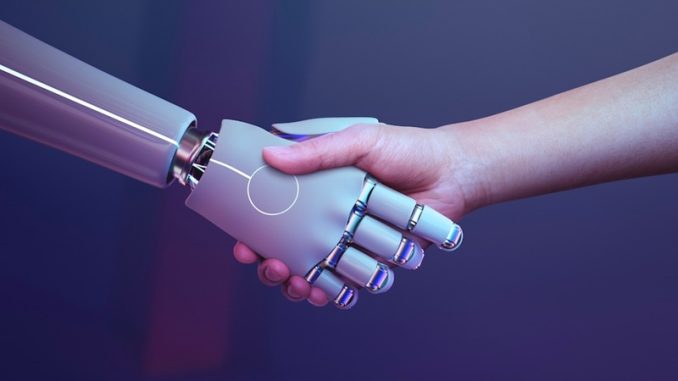
In an age where artificial intelligence (AI) continually reshapes the landscape of human innovation, a dark underbelly emerges: the world of deepfakes and misinformation. These AI-fueled phenomena have surged into the mainstream, casting doubt on the authenticity of digital content and challenging our ability to discern fact from fiction.
Deepfakes, remarkably realistic fabricated media, and the rampant spread of misinformation have ignited concerns about deception’s unchecked power in the digital era. This article delves into the unsettling realm of AI-driven deception, unveiling the technology behind it, examining its real-world impact, and exploring the ethical, legal, and practical responses required to safeguard the truth and trust in an increasingly complex information ecosystem.
What Are Deepfakes?
Deepfakes are hyper-realistic videos or audio recordings created using artificial intelligence (AI) algorithms. These algorithms analyze and manipulate existing content to superimpose one person’s likeness or voice onto another’s, resulting in convincing but entirely fabricated media. Deepfakes have gained notoriety for their potential to deceive viewers and propagate false narratives. By harnessing deep learning techniques, these maliciously crafted creations blur the lines between reality and fiction, raising significant concerns about their misuse.
The Threat Of Misinformation
Beyond deepfakes, the broader issue of misinformation has emerged as a critical societal challenge. Misinformation refers to the spread of false or misleading information, often unintentionally. When combined with the capabilities of deepfakes, misinformation becomes an even more potent threat. The rapid dissemination of fabricated content, whether through social media or traditional news outlets, can have severe consequences, including the erosion of trust, political instability, and even violence.
The Technology Behind Deepfakes
Creating convincing deepfakes requires advanced AI technology, specifically generative adversarial networks (GANs). GANs consist of two neural networks, one that generates content and another that evaluates it for authenticity. These networks engage in a continuous feedback loop, improving the quality of deepfakes over time. The result is AI-generated content that can be virtually indistinguishable from reality, making it increasingly challenging to detect and combat.
Real-world Impact
The real-world impact of deepfakes and misinformation is profound. In recent years, we’ve witnessed deepfakes used in various contexts, from impersonating political figures to manipulating celebrities. Misinformation campaigns have influenced elections, sowed discord, and undermined public trust. The potential for financial scams, identity theft, and corporate espionage further underscores the gravity of this issue. As AI-powered deception becomes more prevalent, society must grapple with its far-reaching consequences.
Detecting And Combating Deepfakes
Detecting and combating deepfakes is an escalating battle against ever-advancing AI-driven deception. Traditional methods, like reverse image and video searches, are often inadequate against sophisticated deepfake technology. Emerging AI-driven detection tools, employing neural networks to spot inconsistencies and anomalies in videos and audio, are promising but face constant evolution by deepfake creators.
Staying ahead of this evolving threat demands ongoing collaboration between tech companies, researchers, and policymakers. Additionally, educating the public to think critically and sceptically when encountering suspicious content is essential. Only through these multifaceted efforts can we hope to detect and combat the insidious spread of deepfakes effectively.
Ethical And Legal Considerations
The ethical and legal dilemmas surrounding deepfakes are complex. On one hand, freedom of expression and artistic creativity must be protected. On the other, the potential for harm and deception is undeniable. Striking a balance requires thoughtful consideration of regulations and safeguards. Various countries are exploring legislation to address deepfake-related issues, but creating effective and enforceable laws remains a formidable challenge in the ever-evolving digital landscape.
How Can I Identify A Deepfake?
Identifying deepfakes can be challenging, but some signs include unnatural facial expressions or lip-syncing errors. AI-driven detection tools are continually improving, but critical thinking and scepticism when encountering suspicious content are crucial.
Are There Any Legal Consequences For Creating Deepfakes?
Legal consequences for creating deepfakes vary by jurisdiction. Some countries have enacted laws to penalize malicious deepfake creators, particularly when used for defamation, fraud, or harassment. However, enforcement can be challenging.
Can Deepfake Detection Tools Reliably Spot All Deepfakes?
While detection tools are improving, they are not foolproof. Highly sophisticated deepfakes may evade detection. Relying solely on technology is not a guaranteed defence; critical thinking remains essential.
How Can We Protect Against Deepfake-driven Misinformation?
Protection against deepfake-driven misinformation requires a multi-pronged approach. Media literacy education, responsible social media sharing, and technological advancements in detection are all vital components of defence.
What Role Do Social Media Platforms Play In Combating Deepfakes And Misinformation?
They must implement robust content moderation and fact-checking mechanisms while promoting media literacy among users. Collaboration between platforms and experts is essential.
Conclusion
Deepfakes and misinformation pose multifaceted threats to society, challenging our capability to discern fact from fiction. As technology advances, our response must encompass not only technical solutions but also legal and ethical considerations. The battle against deepfakes and misinformation is ongoing, demanding collective vigilance, education, and collaboration. In this era of AI manipulation, the stakes are high, but a vigilant and informed society can rise to the challenge, preserving trust, transparency, and truth in the digital age.






Leave a Reply